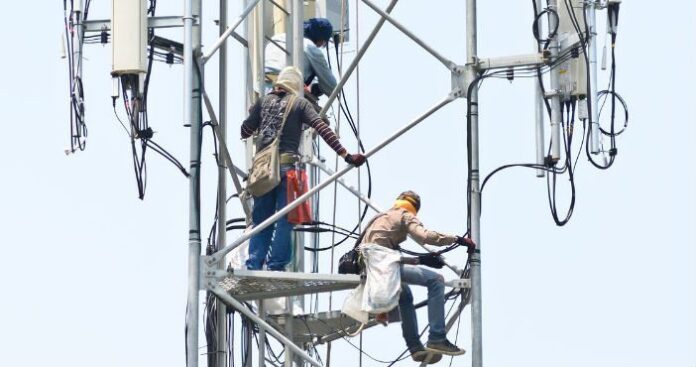German operators Deutsche Telekom, Telefónica Deutschland, and Vodafone have signed a letter of intent to jointly deploy mobile communications networks across the country, with the aim of expanding coverage in rural areas and along road, rail and inland waterway transport routes.
Deutsche Telekom highlighted that this expansion in mobile coverage was a condition that the operators are required to fulfill, as stipulated in a recent 5G spectrum auction.
To achieve this, the three carriers plan to coordinate the deployment and operation of up to 6,000 new cell sites.
New entrant 1&1 Drillisch AG has been invited to participate in this network expansion collaboration. A prerequisite for joining the collaboration is that the operator must be willing to take on an equal share of the expansion projects as the other parties, Deutsche Telekom said.
The plan proposes that each company participating in the collaboration should set up an equal number of new sites which can then be used by the collaboration partners and fitted with their own antennas and the appropriate network technology as required.
The main aim of this cooperation is to close “white spots,” or cellular dead zones, in sparsely populated regions and along traffic routes across Germany. The coverage requirements imposed by the Federal Network Agency (BNetzA) at the spectrum auction in 2019 call for investments worth billions of euros. The three mobile operators continue to express the view that the conditions imposed upon them are excessive and do not comply with applicable legislation.
The companies said that the Federal Cartel Office has been informed about the collaboration plans and that details of the collaboration should be formally agreed upon by spring 2020 at the latest.
“The planned collaboration is a milestone for network expansion in Germany”, said Telekom Deutschland’s Managing Director Dirk Wössner. “Our common goal is to eliminate coverage gaps in the mobile network as soon as possible. Sharing infrastructure is nothing new for us. Sharing it at this scale, however, is a major step in the right direction. After all, high-speed internet and excellent voice quality on road, rail and water are vital for an industrial country like Germany that relies on mobile communications”.
“We are forging an alliance to combat dead spots and increase mobile communications coverage even in areas where it is not profitable”, said Vodafone Deutschland CEO Hannes Ametsreiter. “In future, hundreds of thousands will benefit from this – people in small rural communities, people on roads, people traveling by train. Together, we operators will construct and share a common infrastructure in dead spots – and of course continue to be rivals in a competitive infrastructure market in the rest of the country.”
In June of this year, the German government confirmed that it expected to raise a total of EUR 6.5 billion ($7.16 billion) for 420 megahertz of 5G spectrum in both the 2 GHz and 3.6 GHz bands.
Deutsche Telekom committed to pay EUR 2.2 billion for 130 megahertz of spectrum in both 5G bands, while Vodafone will spend a total of EUR 1.9 billion to acquire 130 megahertz of 5G spectrum.
Meanwhile, Telefonica Deutschland committed to pay EUR 1.4 billion for a total of 90 megahertz of spectrum. New entrant 1&1 Drillisch spent a total of EUR 1.1 billion for 70 megahertz of 5G spectrum.

